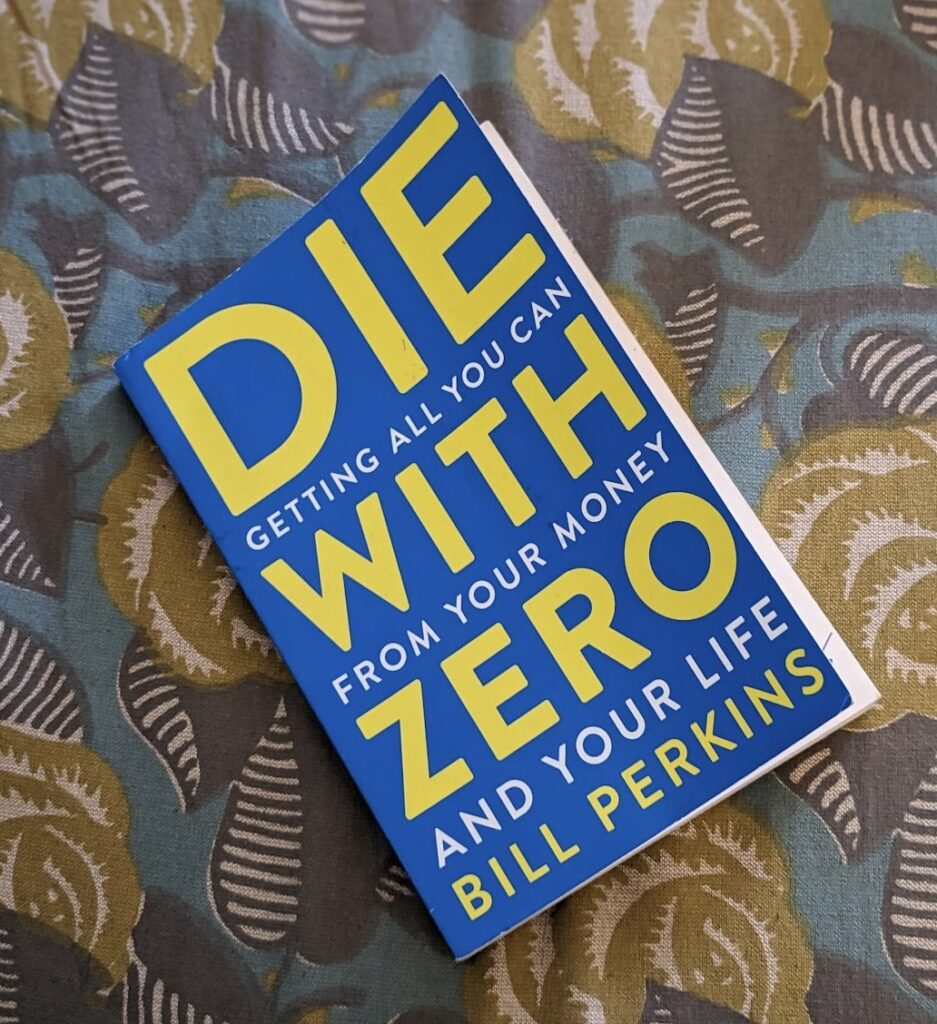Bill Perkins
Remember Aesop’s The Ant & the Grasshopper? The one that is told to teach us the virtues of hard work and the importance of saving for a rainy day. Given the values still hold, most books that have anything to do with money are written for ‘grasshoppers’, but Die with Zero is more for the ants, or in the author’s words, to drag the ant towards the grasshopper.
The basic premise of the book is that we should make full use of our money when we have the capability to enjoy what it brings us. As we age, that capability diminishes, a function of our desires, as well as deteriorating health. While we could still enjoy many things, the yield or utility per dollar goes down with age.
A part of the book is devoted to elaborating on this perspective and proving it with data and anecdotes. Data shows that a lot of people end up over-saving and underspending during retirement and die with a large sum of money still left. Hence the need to temper delayed gratification. Concepts like consumption smoothing – one’s spending not mirroring the variations of income, and transferring money from years of abundance to leaner years. In other words, spend more than your income, if required, early in life for experiences that will give you memories to cherish in your old age, because you can repay it as income increases. To be fair, the author obviously discourages reckless spending.
This also goes for money you wish to give to your near and dear, as well as charity. For instance, better to give the kid money when you’re 65 and he/she is 35, rather than 80 and 50 respectively. The peak utility of money is highest between 35 and 50, when people have the health and the desire. Even within retirement, there are go-go years, slow-go years, and no-go years, and one should bulk up the spending at the top. He also recommends getting a sense of your life expectancy using calculators so you can plan accordingly.
Another useful concept is that of time buckets. Take a duration, say 10 years, and look at 40-50, 50-60 and so on. Now slot the things you want to do, and when you’re best placed to do it. Usually the control variable is money, here it is health and desire. This will help you figure that some things are better when done at certain ages. It’s a perspective shift. The other related shift is seeing your peak as a date (related to biological age) and not a number.
The book also addresses the ‘how’ of implementing this, and overcoming the mental barriers that people commonly have towards this approach, including the not-so-common “I love my job”.
The book does offer a reasonably unique perspective, and at its core, it urges thinking on first principles and making conscious decisions, both of which I support. But I felt that the author underestimates the scarcity mindset, or probably lacks the empathy required for it. The other aspect I didn’t like is the tendency to quantify aspects of life that have multiple dimensions of quality. And finally, the ‘inefficiency’ comment on Sylvia Bloom, who worked as a legal secretary for 67 years, and when she died at 96, bequeathed $8.2m to charity. According to the author, she should have done this earlier while she was alive. Absolute tone-deafness.


Leave a Reply